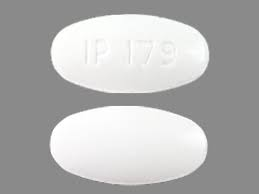Metformin is among the front-line medications for type-2 diabetes treatment which is administered to overweight patients. The chemical name of Metformin HCI is 1-Dimethylbiguanide hydrochloride, and its molecular formula is C4H11N5 • HCl (Yu et al., 2018). Metformin was discovered in 1922 by Jean Sterne, a French physician, and the compound is a white hygroscopic crystalline powder with a bitter taste.

The functional groups of Metformin include Glucophage, Glucophage SR, which are anti-acidity, and Glycomet, which is anti-diabetic. Metformin is classified under biguanides, drugs that work the same and treat specific conditions (Cetin & Sahin, 2016). It is essential because it reduces the sugar levels produced by an individual’s liver. Additionally, the compound decreases the amount of glucose absorbed in the body. Consequently, Metformin increases the insulin effects in an individual’s body (Cetin & Sahin, 2016). Insulin helps the body to get rid of the extra sugars in the blood, thus reducing the levels of blood sugar.
Metformin should be prescribed by a healthcare professional as an oral solution or tablets. Metformin is taken by mouth with food, and the initial oral dose in the immediate release being 500mg twice or 800mg once, and the maximum dose is 2550 mg daily (Cunha, n.d,). The starting dose in extended-release is 500mg to 1000mg once, and it should not exceed 200mg in a day. The patients in the extended-release might switch to extended-release one time in a day, although the maximum dose should be 2000mg. Cunha (n.d.) explains that the common side effects of Metformin include weakness, diarrhea, constipation, nausea and vomiting, stomach pain, heartburn, bloating, and weight loss. Therefore, an important question is what measures should be taken when patients undergoing Metformin medication experience adverse effects that do not disappear within two weeks.
References
Cetin, M., & Sahin, S. (2016). Microparticulate and nanoparticulate drug delivery systems for metformin hydrochloride. Drug Delivery, 23(8), 2796-2805. Web.
Cunha, J. (n.d.). Metformin. RxList.
Yu, X., Jin, Y., Du, L., Sun, M., Wang, J., Li, Q., Zhang, X., Gao, Z., & Ding, P. (2018). Transdermal cubic phases of metformin hydrochloride: In silico and in vitro studies of delivery mechanisms. Molecular Pharmaceutics, 15(8), 3121-3132.